Why do the French Love Edgar Allan Poe so Much?
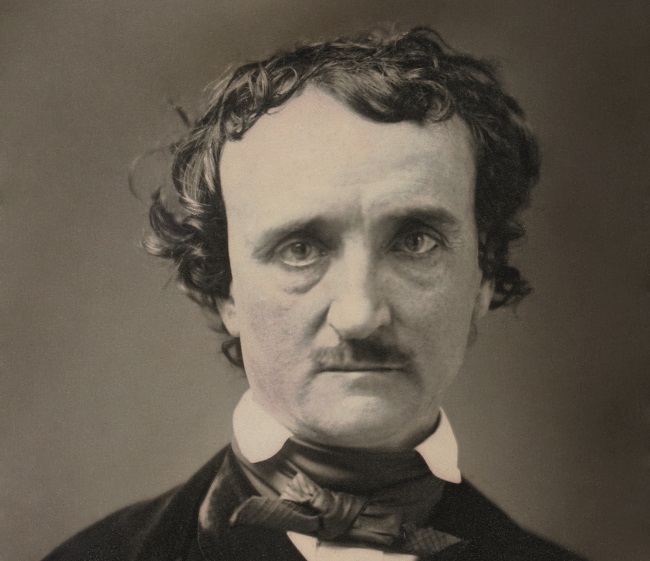

Did you know that Edgar Allan Poe, master of the macabre, was one of France’s most revered authors, although the American writer never set foot on French soil?
It was rumoured that Poe had in fact visited France – after all, he set three chilling tales, The Murders in the Rue Morgue, The Mystery of Marie Roget and The Purloined Letter, amongst imaginary Parisian streets. Deep in the city’s shadows, C. Auguste Dupin, literature’s first pipe-smoking, amateur detective, cracked unfathomable mysteries 40-plus years before Sherlock Holmes was a spark in Arthur Conan Doyle’s eye. At home in Baltimore, Poe had heard that his name was held in high esteem abroad; his Murders in the Rue Morgue had been translated into French, and very well received in the Paris journals.
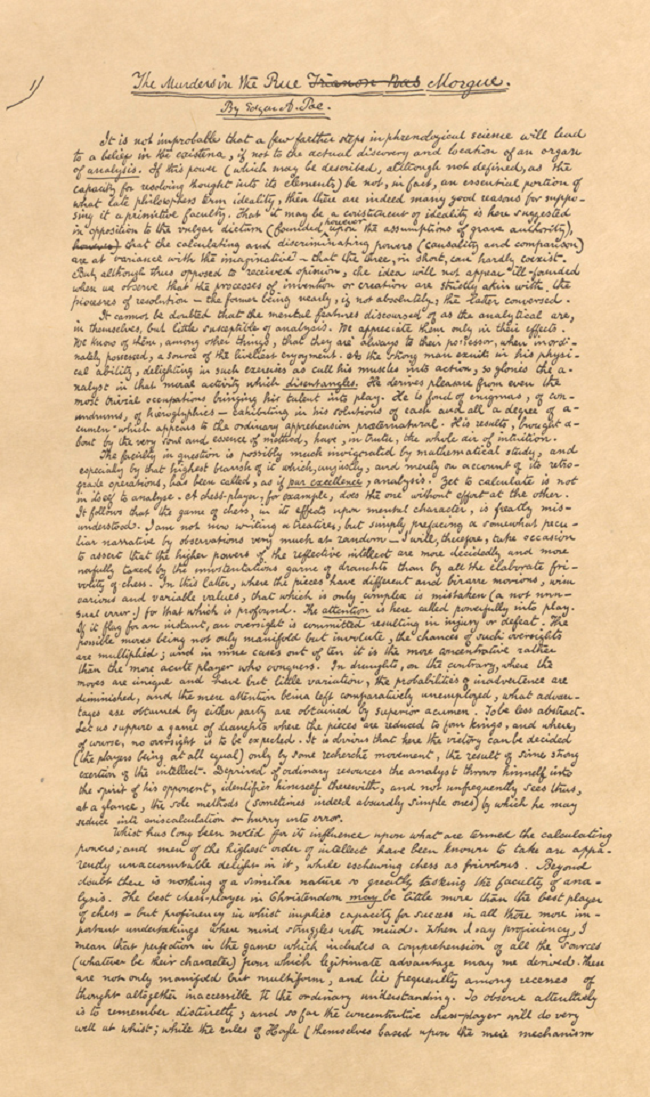
Facsimile of Poe’s original manuscript for “The Murders in the Rue Morgue” © Wikimedia Commons
However, Poe’s reputation in France didn’t stop at detective fiction. After his premature death in 1849 at the age of 40, it was the French who appreciated Poe’s melodramas, while his homeland recalled him as a drunk and wasted talent. Debauchery wasn’t unusual for France’s 19th-century literary community – they understood Poe’s description of the less-savoury side of life. They sought to revive his oeuvre, rife with the motifs of death, regret and lost love. Poe was a master at balancing light with dark, intelligence with obsession. He had much in common with France’s beloved man of letters, Victor Hugo, and they partook in the same Gothic grotesqueries.
The poet Charles Baudelaire said Poe “arouses in me an unbelievable sympathy” and called him a sacred soul with a spiritual and angelic nature. Considering the sad and solitary Poe to be his second self, Baudelaire translated most of his writings into French. The Symbolist poet Stéphane Mallarmé, who shared Poe’s penchant for the supernatural, echoed Baudelaire’s sentiments. He translated The Raven and made Poe’s masterpiece even more unnerving. Just as the idea of Paris had inspired Poe’s Dupin detective tales, Paris’s leading writers and artists were in turn inspired by the American. Jules Verne’s An Antarctic Mystery continued one of Poe’s plots, while artists Édouard Manet and Gustave Doré used a different medium to represent Poe’s stories, with Manet’s pen and ink drawings illustrating Mallarmé’s 1875 translation of The Raven.
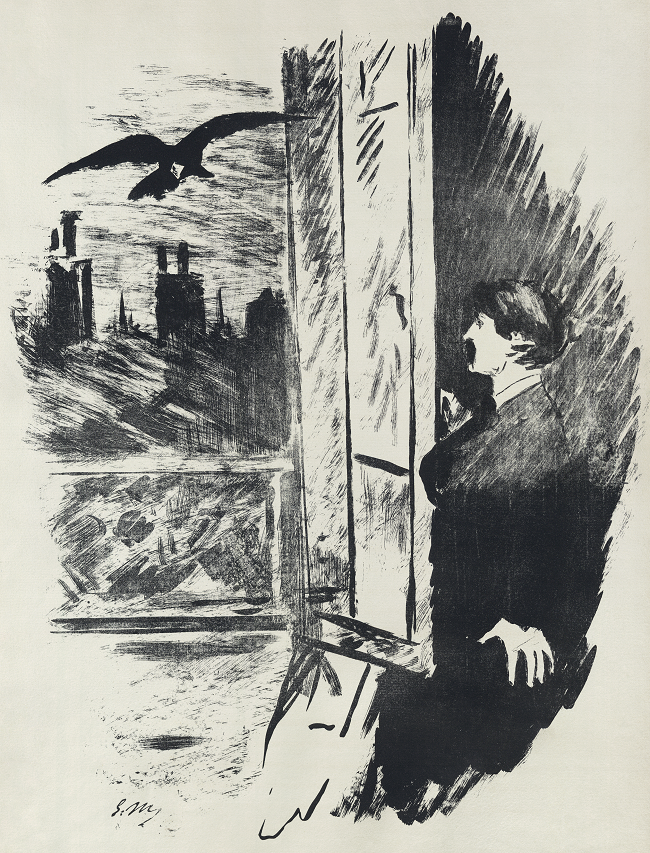
The Raven as illustrated by Édouard Manet (1875), digitally restored, © Wikimedia Commons
A lasting legacy
Capturing Poe’s obsession with terror, Odilon Redon’s unsettling motifs comprise his 1882 tribute, À Edgar Poe. Redon represented one of Poe’s hallucinatory tales with a curious floating eyeball. Three French composers wrote music based on his works, including Claude Debussy who began composing an opera based on The Fall of the House of Usher. Thus, it was the French who were responsible for reviving Poe’s legacy. After his death, he became more popular in France than in America: in 1928, the Rue Edgar Poe in Paris’s 19th arrondissement was named after him, while the Lycée Edgar-Poe in the 10th also bears his name.
From France Today magazine
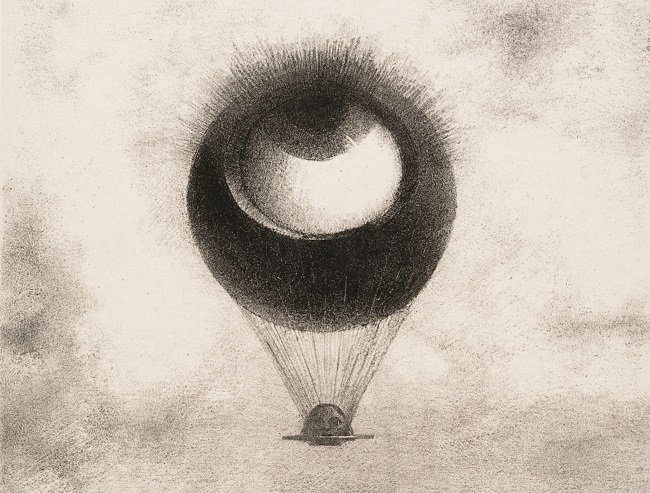
Odilon Redon was inspired by Poe’s obsession with horror
Lead photo credit : Edgar Allan Poe, circa 1849
Share to: Facebook Twitter LinkedIn Email
More in French culture, literature, Paris
By Hazel Smith
Leave a reply
Your email address will not be published. Required fields are marked *


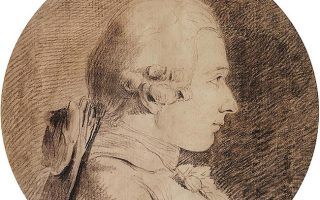

REPLY